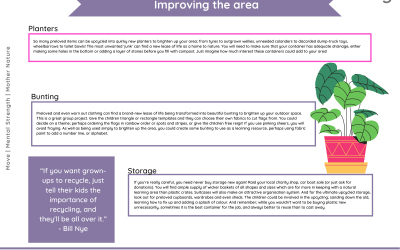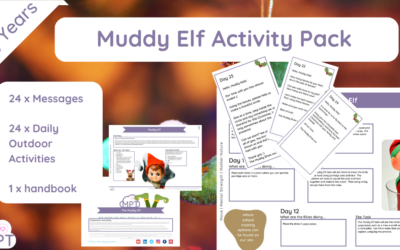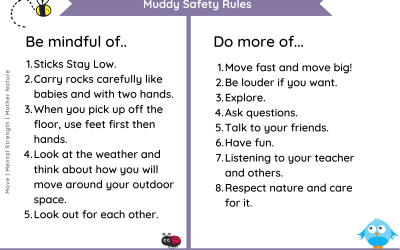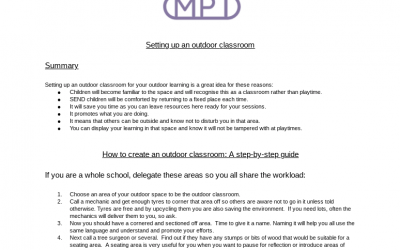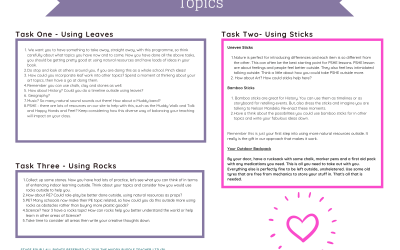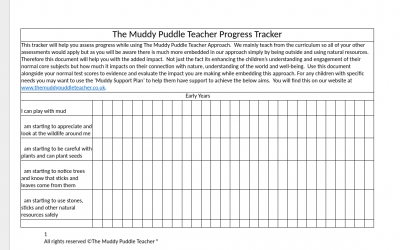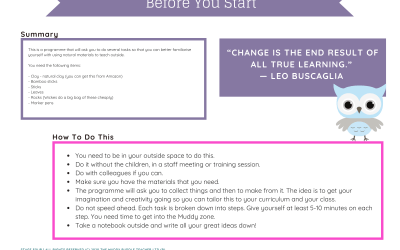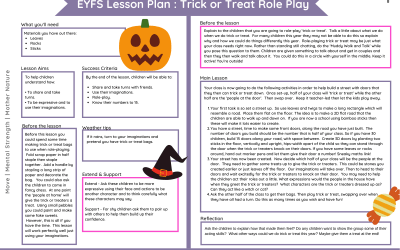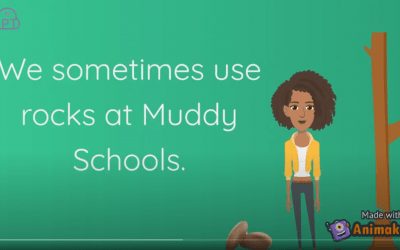World tiger day EYFS is a very important day to raise awareness of the beautiful animal that is the tiger. ...
World Tiger Day EYFS
Dec 7, 2020
World Tiger Day EYFS by Muddy Teacher Beth World tiger day is a very important day to raise awareness of the beautiful...
Setting up an outdoor classroom (Handout)
Dec 7, 2020
Use Setting up an outdoor classroom to help create an outdoor space that is practical, easy to use and nurtures your...
Crafting with upcycled materials
Dec 2, 2020
Use Crafting with upcycled materials to appreciate the joys and creativity that can be gained from your junk. It is a...
Muddy Elf (Nursery&School Pack)
Nov 30, 2020
Use this incredibly innovative and creative Muddy Elf Ideas Pack to get your children outside daily to enjoy an Elf...
Muddy Safety Rules (Poster)
Nov 27, 2020
Use Muddy Safety Rules to help put a safety policy in place that children can refer too. It is important that children...
Creating an Outdoor Classroom
Nov 18, 2020
Use Creating an Outdoor Classroom as part of a document needed to complete stage one of the MPT approach training. Our...
Upskill on Natural Resources
Nov 10, 2020
Use Upskill on Natural Resources to help you get better at using natural resources found outside to teach subjects...
Outdoor Learning Progress Tracker – all ages
Nov 4, 2020
The Outdoor Learning Progress Tracker is incredible! It often is hard to prove and show progress from Outdoor Learning...
Outdoor SEND Care Plan
Nov 4, 2020
Use Outdoor SEND Care Plan to help children with individual needs access Outdoor Learning safely. Muddy Puddles has the complete package to support any needs you may have when learning outside. As well as our Outdoor SEND care plan check out our dedicated SEND area.
Upskill on Natural Resources
Oct 26, 2020
Use Upskill on Natural Resources as part of your stage two training process. A great CD top up and refresher on its own.
Horrible Halloween Lesson Ideas Pack
Oct 22, 2020
Use our Horrible Halloween Ideas Pack to get lots of ideas and ways to make Halloween special in your class.
Halloween Trick or Treat Lesson Plan
Oct 22, 2020
Use Halloween Trick or Treat Lesson Plan to get role play, speech and language into one outdoor learning lesson!
Rock Safety Video
Oct 15, 2020
Use our Rock Safety Video to teach the children how to use rocks safely.
Whole School Subscribers: Step 6 Next steps
Oct 14, 2020
Watch Step 6: Next Steps to round up the whole school training and to plan and prepare for moving forward with success!
Step 5: Introduction to Stage Four
Oct 14, 2020
Watch Step 5: Introduction to Stage Four to introduce the last and final stage to the trainees before they conduct their coursework.
Step 4: Introduction to Stage Three
Oct 14, 2020
Watch Step 4: Introduction to Stage Three to help introduce the third stage before the trainees go ahead and do their coursework.
Step 3: Introduction to Stage Two
Oct 14, 2020
Watch Step 3: Introduction to Stage Two to help introduce the second stage of the training and is to be watched before the trainees do the stage two coursework.
New In
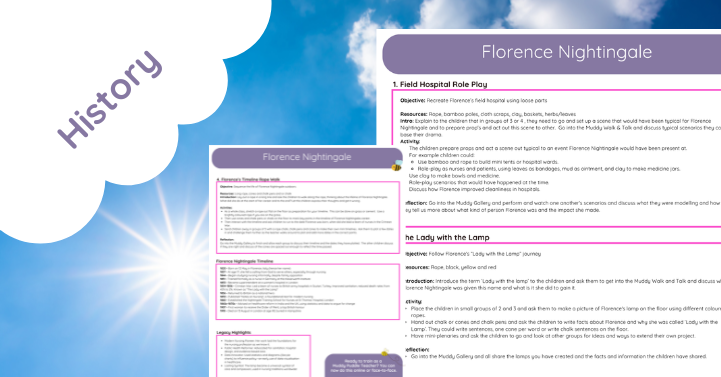
6 Florence Nightingale (KS1) Outdoor Ideas
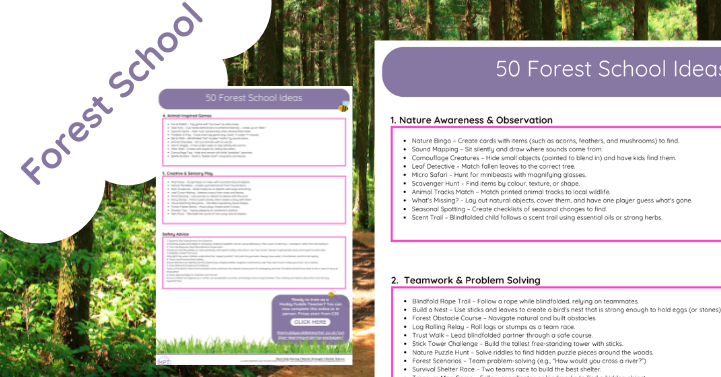
50 Forest School Games

Outdoor Volcano Lesson Ideas Pack
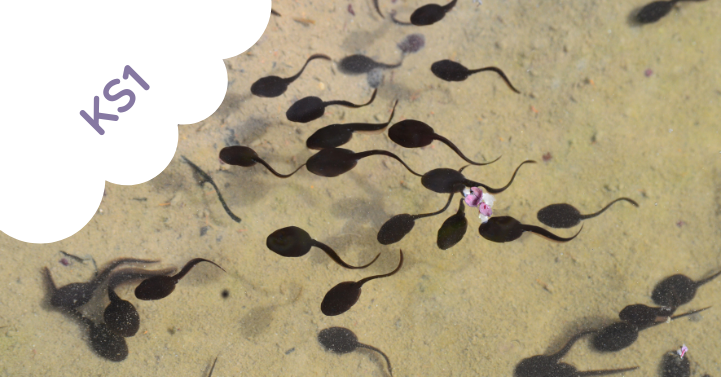
Food Chains – Outdoors
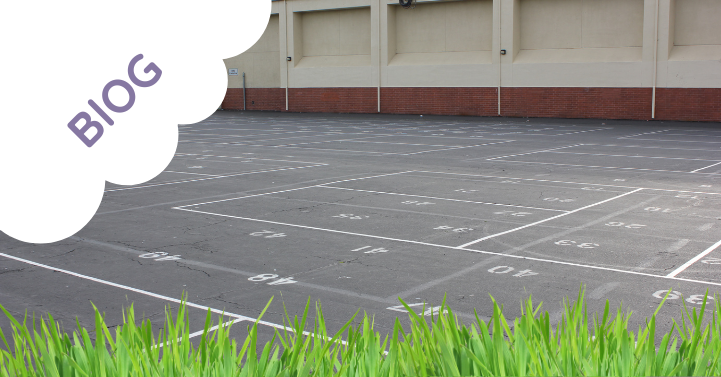
Ch Colouring Sheets
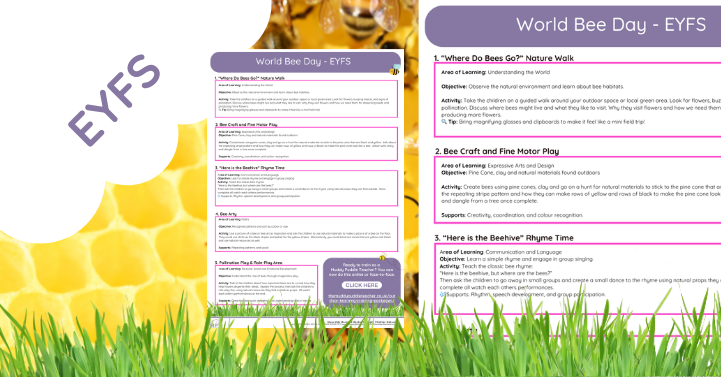
World Bee Day EYFS
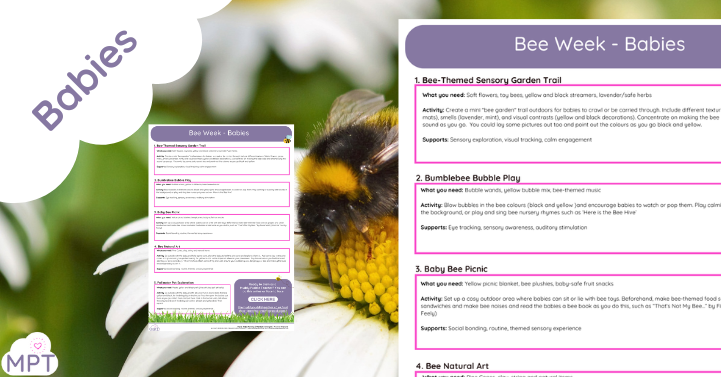
World Bee Day (Babies)

Outdoor Learning Ideas (Ropes) KS1
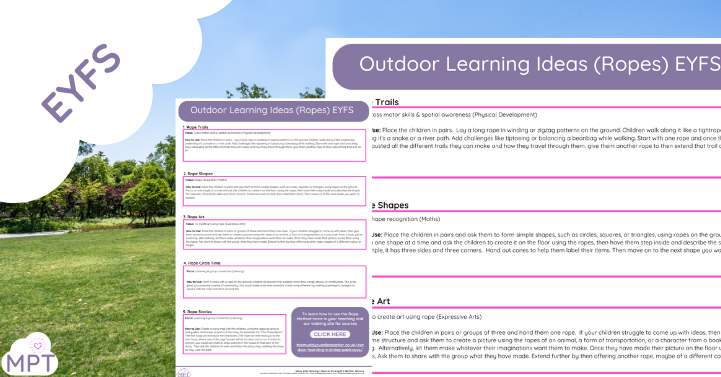
Outdoor Learning Ideas using Ropes (EYFS)






